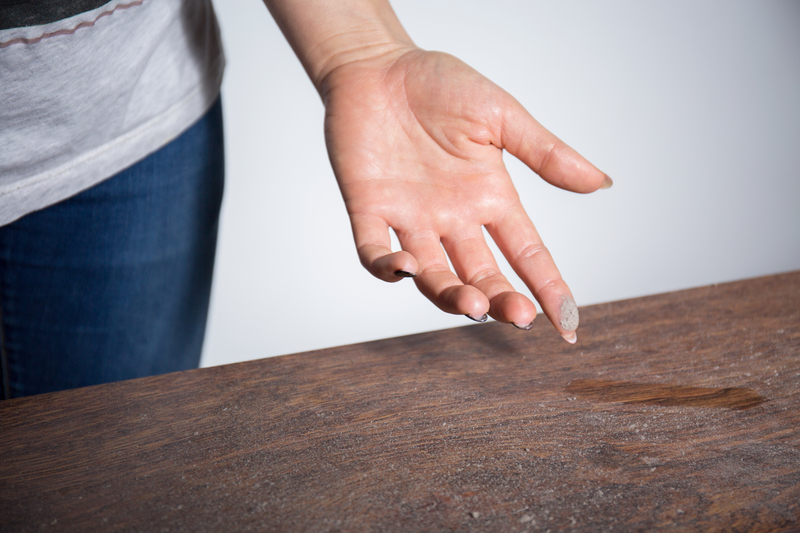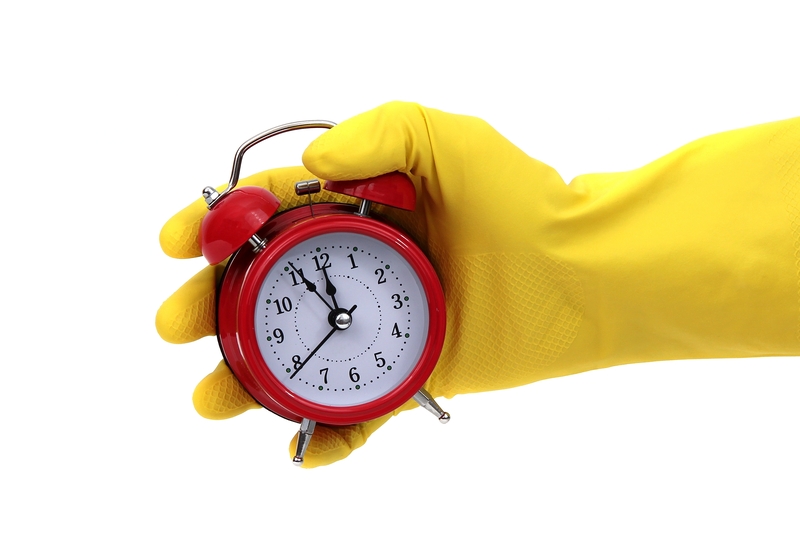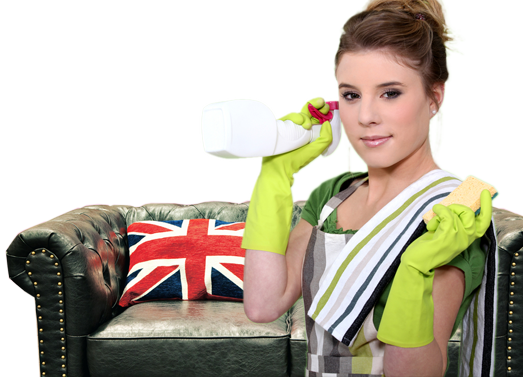Secrets to Removing Stubborn Stovetop Burn Residues
Posted on 16/09/2025
Secrets to Removing Stubborn Stovetop Burn Residues
Everyone who enjoys home cooking knows the annoyance of stubborn stovetop burn residues. Those unsightly, tough stains--whether from boiled-over sauces or scorched oils--stick around long after a meal, refusing to budge. But what are the true secrets to removing burnt-on spills and restoring a sparkling clean stovetop? This comprehensive guide uncovers not only how to remove stubborn stovetop burn residues, but also the best tested methods and maintenance tips for a gleaming cooktop.

Understanding Burnt Residue on Stovetops
Before jumping into cleaning hacks, it's essential to understand why these marks occur and what they're made of. Burn residues build up from repeated heating and spills, leading to a layer of carbonized food and oil that bonds strongly to your stovetop's surface. Depending on whether your stove is glass, ceramic, induction, or gas, the cleaning process may differ slightly.
Common causes of stovetop burn stains:
- Pots boiling over and liquids evaporating quickly
- Food spills left on high heat
- Unattended cooking sessions
- Splattered grease and sugary spills
Initial Steps: Preparing for Burn Residue Removal
Preparation is crucial for effective cleaning. Start by:
- Ensuring the stovetop is completely cool to the touch
- Removing any removable burner grates or drip pans
- Wiping away loose crumbs or debris with a damp microfiber cloth
- Assembling the necessary materials: mild dish soap, baking soda, white vinegar, a non-scratch sponge, a scraper (for glass stoves), and paper towels
DIY Methods for Removing Stubborn Stovetop Burn Residues
The Baking Soda and Vinegar Magic
*Baking soda and vinegar* are legendary household cleaners with abrasive and degreasing power--ideal for burnt-on residue removal.
Here's how to use them:
- Sprinkle a generous layer of baking soda directly over the burnt area.
- Spray or pour white vinegar over the baking soda to create a fizzing action (this helps loosen the grime).
- Allow the mixture to sit for 10-20 minutes to penetrate the residue.
- Gently scrub with a non-abrasive sponge or cloth.
- Wipe clean with a damp towel and repeat as necessary.
Tip: For tough, stuck-on spots, cover the mixture with a hot, wet towel to soften the residue before scrubbing.
Soapy Solution Soak
If baking soda and vinegar aren't enough, try a soapy soak:
- Mix a few drops of dishwashing liquid with hot water.
- Soak a towel or sponge in the solution and lay it over the burnt areas for 30 minutes.
- Scrub with a non-scratch sponge, working in circular motions.
This softens stubborn burnt residue for easier removal, perfect for stovetop burn marks that aren't budging with basic cleaning.
Specialty Cleaners for Stovetops
There are effective store-bought cleaners designed specifically for ceramic or glass stovetops. These products often contain fine abrasives and degreasers that break down stubborn baked-on grime without scratching surfaces.
- Apply the cleaner according to manufacturer instructions.
- Use a designated stovetop cleaning pad or soft cloth.
- Buff the surface gently; don't apply too much pressure.
*Always test new products in a small area first to avoid cosmetic damage.*
Using a Razor Blade Scraper (for Glass & Ceramic Stoves)
For the most stubborn stovetop burn residues on glass or ceramic surfaces, a razor blade scraper is a secret weapon.
- Hold the blade at a 45-degree angle.
- Gently scrape the residue, being careful not to gouge the surface.
- Wipe away loosened debris.
Note: Only use this method on flat, non-coil stovetops, and always keep the blade edge flat against the surface.
Special Considerations by Stovetop Type
Gas Stovetops
Gas ranges have burners, grates, and drip pans--all of which collect spilled food and charred bits.
- Remove and soak grates/pans in hot, soapy water for up to an hour.
- Scrub with a nylon brush or non-scratching sponge.
- Wipe the stovetop surface with baking soda paste for burn marks and rinse with clean water.
Glass and Ceramic Cooktops
Never use abrasive powders or steel wool, as these will scratch the sleek finish. Instead, focus on the baking soda and vinegar method, specialty cooktop creams, and razor blade scrapers.
Induction Cooktops
Induction stoves have a glass surface similar to ceramic cooktops. Use non-abrasive cleaning methods, avoid excessive water near controls, and stick to gentle scraping tools if required.
Tackling Extremely Stubborn Burn Deposits
If typical household methods aren't enough, here are some expert tips for persistent burnt-on stains:
- Repeat soaking: Several rounds of moist towel soaking can help gradually soften deposits.
- Ammonia (for gas stove grates only): Sealing grates in a bag with a small amount of ammonia overnight can break down tough residues. *Ventilate well and rinse thoroughly.*
- Lemon juice and salt: Use this mixture for natural abrasive action on lighter stains. The acidity helps dissolve sugars and burnt-on proteins.
- Professional cooktop cleaners: Sometimes heavy-duty, non-abrasive commercial solutions are necessary. Follow all label directions and safety guidelines.
How to Prevent Stubborn Stovetop Burn Residues
Maintenance is the ultimate secret to avoiding future stovetop burn marks and residues. Here's how to keep your cooktop looking like new:
- Wipe up spills immediately: The longer spills sit, the more they bake on. Use a damp microfiber cloth after each cooking session.
- Deep clean weekly: Even if the cooktop looks clean, regular deep cleaning prevents buildup.
- Use cooking splatter guards: These prevent grease and sauces from splattering onto burners or surfaces.
- Line drip pans: For gas ranges, use aluminum foil or purchase reusable liners to catch spills for easy removal.
- Check pot and pan bottoms: Clean cookware prevents residue transfer to the stovetop.
*Tip: Set a routine reminder to wipe down the entire stove, including knobs and crevices, once a week.*
Natural Cleaners vs. Chemical Cleaners: Which is Best?
Many wonder whether to stick with green cleaning solutions or try heavy-duty chemicals. Here's a comparison:
- Natural methods (like baking soda, vinegar, lemon) are safe, affordable, and effective for light to moderate residues. They're also non-toxic, making them ideal for families.
- Chemical stovetop cleaners work quicker and can tackle tougher stains, but always ventilate your kitchen and avoid mixing products to prevent dangerous fumes.
- For routine cleaning and mild stains, natural methods are preferred.
- For occasional deep cleans or severe burn deposits, reach for a specialty product.
*Always read your stove's manual to check recommended cleaning agents and forbidden chemicals.*
Frequently Asked Questions about Stubborn Stovetop Burn Residues
Can burned residues damage my stovetop?
Yes--leftover charred food can etch and discolor ceramic and glass surfaces, while trapped residues can cause unpleasant odors, smoke, and uneven heating on all stove types.
Is it safe to use steel wool on stovetops?
No! Steel wool and abrasive cleaners will scratch modern cooktops, leaving permanent marks and damaging finishes. Always use non-abrasive tools.
What is the fastest way to remove burnt-on stains?
For minor stains, a hot towel soak followed by baking soda paste and gentle wiping is the quickest safe method. For heavy build-up, use a razor scraper (on glass only) carefully.
Can commercial oven cleaner be used?
Most oven cleaners are too harsh for stovetops, especially glass and ceramic. Read product labels closely, and always test a small area.

Safety Tips for Cleaning Stovetops
Remember these essential safety precautions:
- Always unplug electric stoves or turn off gas before cleaning.
- Never use excessive water around electrical controls.
- Avoid combining chemical and natural cleaners, which can cause dangerous reactions.
- Wear gloves to protect your skin from cleaning agents and sharp tools.
- Work in a well-ventilated area, especially when using commercial products.
Conclusion: Enjoy a Sparkling, Burn-Free Stovetop
With these secrets to removing stubborn stovetop burn residues, your cooking surface can shine like new--no matter how bad the mess. The combination of simple kitchen ingredients, gentle scraping techniques, targeted cleaning routines, and a sprinkle of prevention, ensures burn marks are always history, not a headache.
Remember, the true secret lies in regular care and quick cleanups. Commit to these habits, and you'll spend less time scrubbing--and more time enjoying delicious meals at home!
Ready for a Burn-Free Kitchen?
Start applying these tips today to conquer burnt-on spills for good. Your stovetop (and your sanity) will thank you!





